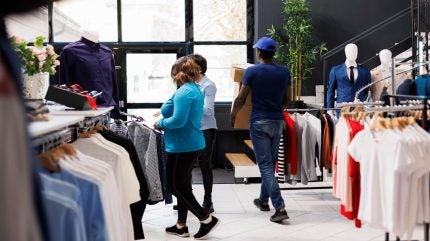
For the week concluding 23 March 2025, year-over-year foot traffic saw considerable increases in sectors such as clothing and shoes as well as superstores, and department stores.
A notable uptick in customer visits was seen, with clothing store visits rising by 6.20%, shoe stores by 4.36%, and superstores by 4.27%. Analysts attribute this rush to consumers’ desire to secure goods at current prices before tariffs potentially raise costs on imported items.
Towards the end of March, the scenario shifted with foot traffic decreasing sharply in many of these categories.
Footfall in clothing stores declined by 4.20% and shoe stores recorded larger traffic declines at 9.49%.
Analysts suggest this downturn is a result of “pull-ahead” buying where consumers stocked up on essential items due to tariff hike fears, but then had less need to shop again.
Additionally, the uncertainty surrounding trade policies may have led some consumers to postpone their shopping activities until more definitive information on tariffs was available.

US Tariffs are shifting - will you react or anticipate?
Don’t let policy changes catch you off guard. Stay proactive with real-time data and expert analysis.
By GlobalDataThe subsequent week in April demonstrated a more subdued activity level with clothing outlets registering slight decline in store traffic.
Grocery and liquor stores experienced modest increases in foot traffic during this period. This suggests a continued cautious approach towards non-essential purchases while maintaining consistent demand for necessities.
Foot traffic rose again by 13 April with clothing stores recording 4.78% growth and shoe stores recording 4.03% growth. Specialty food stores registered the highest growth with 22.94% growth.
Reasons for changing consumer behaviour
Fear of higher prices
Apparel, footwear, and specialty goods are predominantly sourced through global supply chains. With impending tariffs on the horizon, a segment of consumers is proactively engaging in bulk purchasing to mitigate potential price escalations.
Uncertain implementation timelines
Consumers who have pre-emptively purchased items during periods of price uncertainty may choose to pause further spending until the tariff situation becomes clearer. If policy announcements remain ambiguous, foot traffic can fluctuate significantly from one week to the next.
Promotional timing
Retailers often respond to tariff-related concerns with flash discounts or limited-time deals, leading to short-lived surges in foot traffic. Once these promotions conclude, visits can decline until the next sale or press announcement.
Looking ahead
The fluctuations observed from late March into April offer a glimpse of potential future patterns should new tariffs be implemented, or negotiations extended.
pass_by expects consumers to continue the “buy now or wait” behaviour, leading to unpredictable surges and declines in foot traffic.
Latest data from the Census Bureau revealed that US retail sales, including clothing, experienced a surge in March 2025, despite ongoing consumer apprehension over the potential impact of escalating tariffs.
Navigate the shifting tariff landscape with real-time data and market-leading analysis. Request a free demo for GlobalData’s Strategic Intelligence here.




